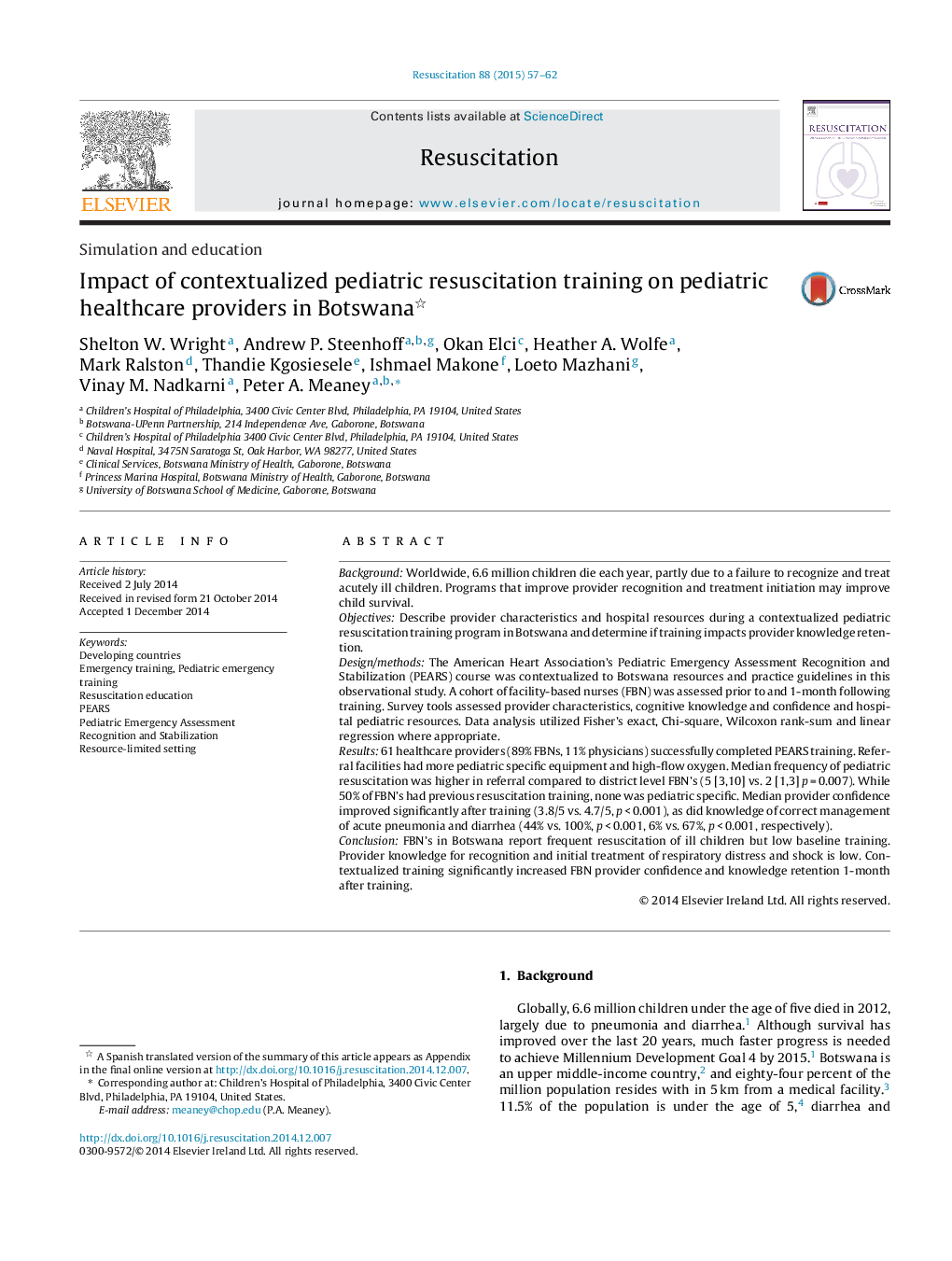| Article ID | Journal | Published Year | Pages | File Type |
|---|---|---|---|---|
| 3008013 | Resuscitation | 2015 | 6 Pages |
BackgroundWorldwide, 6.6 million children die each year, partly due to a failure to recognize and treat acutely ill children. Programs that improve provider recognition and treatment initiation may improve child survival.ObjectivesDescribe provider characteristics and hospital resources during a contextualized pediatric resuscitation training program in Botswana and determine if training impacts provider knowledge retention.Design/methodsThe American Heart Association's Pediatric Emergency Assessment Recognition and Stabilization (PEARS) course was contextualized to Botswana resources and practice guidelines in this observational study. A cohort of facility-based nurses (FBN) was assessed prior to and 1-month following training. Survey tools assessed provider characteristics, cognitive knowledge and confidence and hospital pediatric resources. Data analysis utilized Fisher's exact, Chi-square, Wilcoxon rank-sum and linear regression where appropriate.Results61 healthcare providers (89% FBNs, 11% physicians) successfully completed PEARS training. Referral facilities had more pediatric specific equipment and high-flow oxygen. Median frequency of pediatric resuscitation was higher in referral compared to district level FBN's (5 [3,10] vs. 2 [1,3] p = 0.007). While 50% of FBN's had previous resuscitation training, none was pediatric specific. Median provider confidence improved significantly after training (3.8/5 vs. 4.7/5, p < 0.001), as did knowledge of correct management of acute pneumonia and diarrhea (44% vs. 100%, p < 0.001, 6% vs. 67%, p < 0.001, respectively).ConclusionFBN's in Botswana report frequent resuscitation of ill children but low baseline training. Provider knowledge for recognition and initial treatment of respiratory distress and shock is low. Contextualized training significantly increased FBN provider confidence and knowledge retention 1-month after training.
